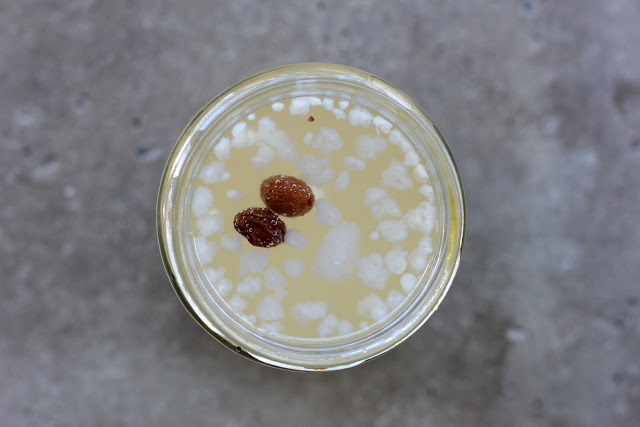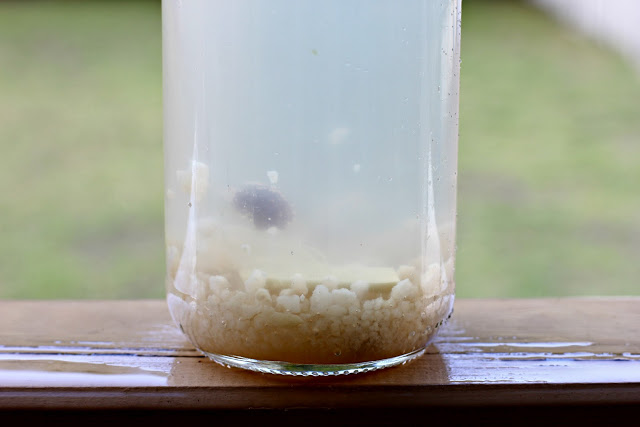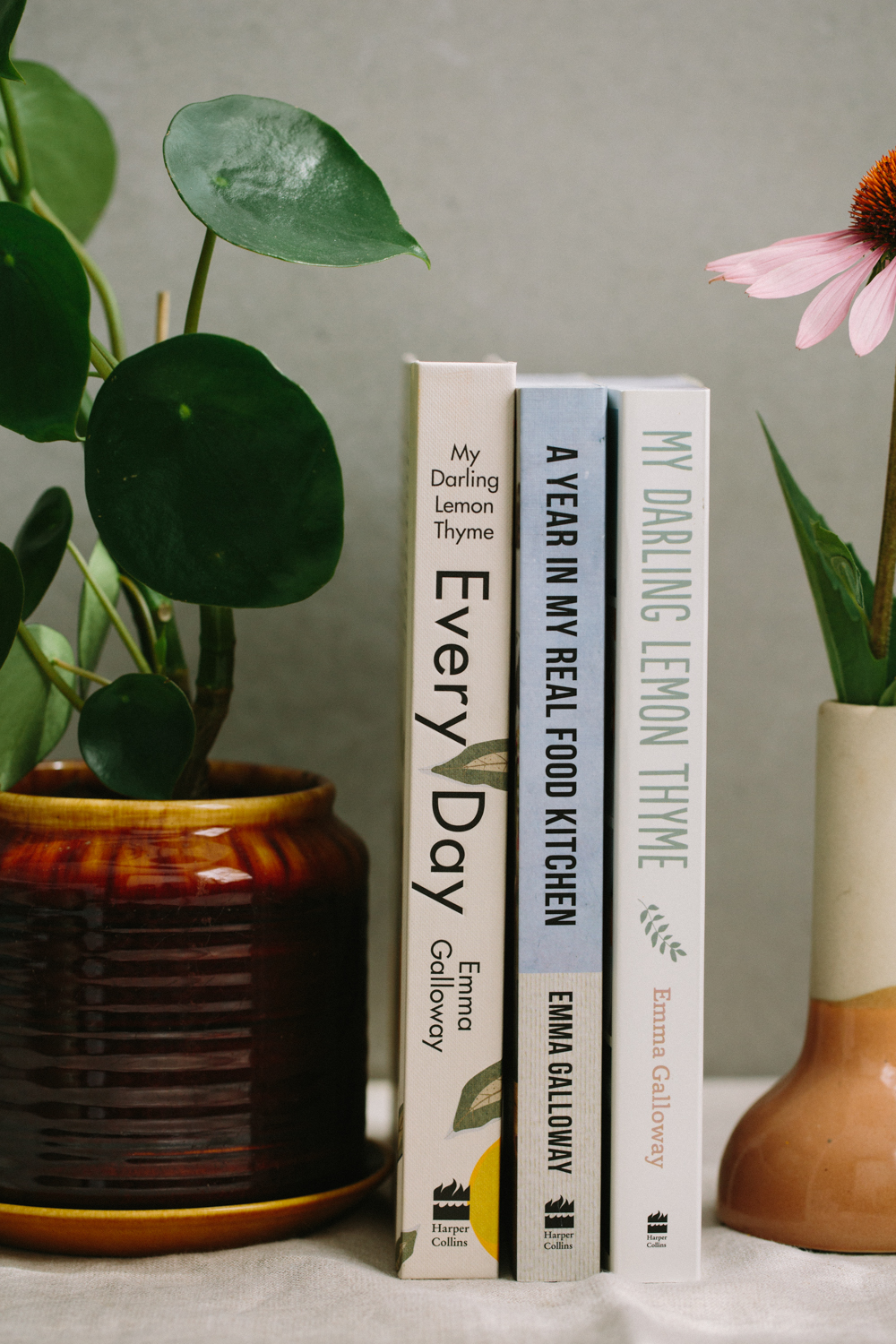I was sitting in the waiting room of the Naturopaths clinic (where I got the kids and myself allergy tested) when I first came across an article about Kefir. It sounded amazing. A lactose-free probiotic yoghurt drink sounded almost too good to be true! But as is with many things, I wrote the name down, placed it in my bag and promptly forgot all about it. A few months later a tiny little write-up in the taste magazine had me eager to find out more, so after jumping online and doing a little research I had some milk kefir grain arriving by courier the next day. This was over a year ago and since then I have also acquired some of the water kefir grains. Even though I didn’t know it at the time, Mum and Dad used to make kefir yoghurt for our family when I was little, so Mum was pretty happy to get her hands on some again!
If you have never heard of Kefir (apparently pronounced “Keh-fear” even though I hate to admit that we call it “ke-wha”, being the good New Zealanders that we are!) you really should check out Dom’s kefir site. Kefir has some pretty big claims to fame including; the ability to heal lactose intolerance, improve immunity, heal eczema, re-balance intestinal flora, heal leaky gut syndrome, slow the aging process, increase energy to name but a few and for us it has been an amazing alternative to milk and yoghurt (although we do now tolerate regular yoghurt). Once mixed with milk and left to ferment at room temperature for around 24 hours the grains turn the milk into an amazing lactose-free cultured probiotic milk drink and can be left slightly longer and the whey strained off, leaving a thick lactose-free yoghurt. The grains grow, so you will always have excess to pass onto friends and family, but just be warned that it does take a little commitment on your part to keep the grains alive, it’s almost like having a pet in a way.
My water kefir grains were given to me by a friend and while I didn’t warm to them straight away I have been favouring these over the milk ones lately, mostly because they only require water, sugar and raisins (or other dried fruit) to keep alive. You can add flavourings like I do either while fermenting or after. I add a few slices of fresh ginger to the brew and the end result is a cross between apple cider and ginger beer in flavour with a lovely little fizz that the kids love. You may think that the end product would be high in sugar, but apparently the grain feeds off the sugar so most of it is processed and used up once you consume it. It’s been said to be okay for diabetics as well. The water kefir grains have all the same pro-biotic goodness that the milk ones do so is a great pro-biotic source for vegans and people avoiding dairy products.
I know that milk kefir is available commercially overseas but have read that they do not contain all the goodness that the real kefir, made with grains does. Commercially made kefir is made using the fermented kefir as a started much in the same way regular yoghurt is made and does not actually come into contact with the actual kefir grains at all. So I’d favour real homemade kefir over these store bought ones any day.
I use milk kefir in many recipes; pancakes, muffins, cakes, scones, bread, soda bread, in place of milk, yoghurt and buttermilk. But mostly we use it to make a simple berry smoothie along with a banana, some frozen berries and a little honey or maple syrup. Blitzed until smooth and creamy. The kids love this smoothie for afternoon tea or even more if I freeze the smoothie into iceblock moulds. (Icypole’s to you Australians!)
Milk Kefir,
You will need;
- 1-2 tablespoons milk kefir grains
- 1 litre of milk (you can use rice, soy or coconut milk in place of the cow’s milk, but the grains won’t multiply like they normally would. Organic milk is best, or even better would be raw milk if you can source it. But plain everyday homogenised milk is fine, the fermentation process is said to replace a lot of the goodness that is lost through pasteurisation and homogenisation anyway).
- a suitable 1 litre glass jar
- a small square of muslin/material (I just use a small face cloth)
- 1 rubber band
- 1 medium sieve (I use plastic as I’ve read the kefir grains don’t like coming into contact with many metals)
Pour your milk into the clean glass jar, add kefir grains and cover the top with muslin then secure in place by placing a rubber band around the lip of the jar. Place jar in a dark place (I put it in my pantry) and leave for 12-24 hours until you see it starting to separate into curds and whey.
Pour the entire contents of jar into a sieve placed over a bowl. Gently shake sieve from side to side to let kefir drain through (if you have left it a little bit too long and there are some really solid bits, I just sit the sieve in the bowl and using the drained whey I mix it gently back into the grains to loosen any really firm curds then re-strain (this will sound strange but if you try it, it will make sence!) The strained kefir is then ready to use.
To further increase the B vitamins you can leave this strained kefir at room temp for a day or more if in the fridge. Then use the kefir grains to start all over again. You can make as little or as much as you want, I usually make 1/2 litre every other day (and I slow things down a bit if I have a backlog by letting it ferment in the fridge instead of in the pantry). Excess kefir grains can also be frozen by rinsing well, patting dry on a clean cloth, lightly coating in milk powder and freezing in a double lined plastic bag. Kefir made from frozen grains however make take up to three months of fermentation before consistently good batches are produced.
Water Kefir
You will need;
- 2 tablespoons-1/4 cup of water kefir grains
- 2-3 tablespoons raw cane sugar
- 1 litre fresh filtered water, approx
- 1-2 tablespoons raisins (or other dried fruit, organic is preferred as the pesticide residue found on regular ones can damage the kefir grains)
- 2-3 slices of fresh ginger (optional)
- 1 litre glass jar with screw on lid
- 1 medium sieve
Place 500 ml of the water into the cleaned glass jar, mix in sugar, add raisins and ginger if you are using. Stir to slightly dissolve sugar, but don’t be too pedantic. Add the water Kefir grains, and top up with enough water to fill jar. Screw on the lid and leave out on a bench that’s out of direct sunlight (I’ve read on top of your fridge is good, but mine just lives on our bench top). Leave 24-48 hours until most of the raisins have floated up to the surface (you will see and hear lots of bubbles too).
Place your sieve over a bowl or wide necked bottle and pour the entire contents of the jar out, remove raisins and ginger and discard. The resulting fizzy amber coloured drink is ready to consume, or as with the milk Kefir, if you want to further increase its vitamin content you can then leave for another 1-2 days before consuming (but just be warned that there is a small amount of alcohol produced, and the longer you leave it the stronger it gets!) I tend to just drink straight away with a squeeze of lemon or lime juice as it looses it’s fizz unless stored under airlock.
These are the basic methods that I use. If your interested in getting yourself some Kefir grains, google it and find someone in your area selling their excess. It really has helped us with our food intolerances (by balancing out our gut bacteria as well as being an amazing source of calcium, B Vits, protein). Go on google some today and get drinking!
Disclaimer – The minute amounts of lactose left in milk Kefir have been fine for us, but as with everything you will have to try it for yourself first to know if it’s ok for you. Or follow Dom’s instructions to further reduce the lactose amounts. He also has tips on how to slowly introduce kefir into your diet. Cheers ~Emm
Responses











Just made Honey Kefir Scones this morning, sooo much lighter and fluffier than with normal milk. How old were your kids when they started having kefir smoothies? Jude Blereau has them in the 8-12 month section in her book but Plunket suggests waiting til after 12 months for cow milk drinks??
Mmmmmm those sound yum as! Yeah i’ve found pancakes are lighter in texture too, I think it’s more like buttermilk than milk. I can’t remember exactly how old the kids were when we got the kefir grains, I think Kye was over 1 already when we got them? What does Plunket reccomend for yoghurt? I’d class it more as that than milk. With our kids being so sensitive to lactose and gluten I was abit more hesitant than most, I waited till after 12 months for most foods that are associated with allergic reaction. Better to be safe than sorry. xx
mum still has her milk kefir!! but she makes hers into yogurt, and she thinks it tastes good!!! ITS WAY NICER in a smoothie!!!
great blog sis! xox
hehe yep it is an aquired taste. Ada and I are getting into having it as yoghurt like mum, plain. We must be hard! xxx
Great post Emm – I had no idea what was involved in making kefir – there’s also a great recipe on chocolate and zucchini for making lemon kefir ice cream. Sounds delicious. http://chocolateandzucchini.com/archives/2008/07/lemon_kefir_ice_cream.php
Thank you so much Deb!!! I have been thinking about trying to make Kefir icecream ever since we got our Kefir grains. Thank you so much for sharing the link!! I’ve checked it out and it looks beautiful, will try for sure, cheers

[…] my last post about Kefir, a good friend of mine commented on how she had made honey Kefir scones, since then I haven’t […]